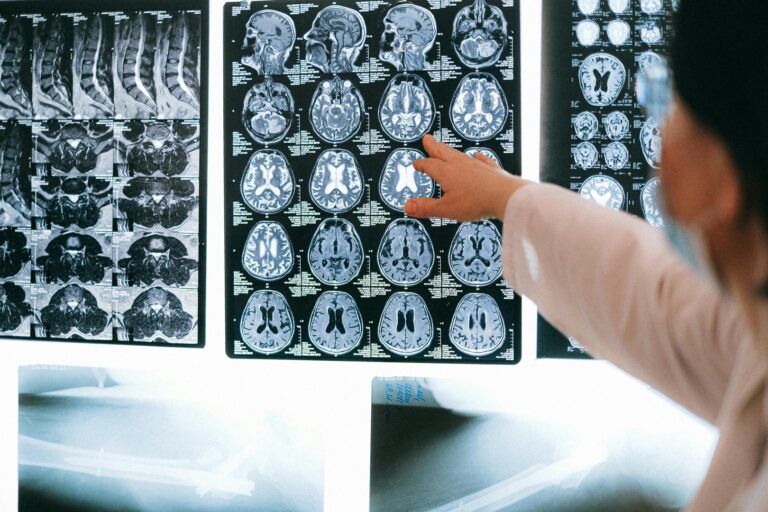A subset of patients with IIH will demonstrate a disease course that will require more than medications, weight loss, and other conservative measures. This group of patients comprises two categories: those patients who fail medical management and those with a much more aggressive disease presentation – Fulminant IIH.
The management of these patients differs from those without an aggressive presentation or in those for whom medical therapy is effective. With regards to fulminant IIH specifically, due to the rapidity of symptom onset and the severity of symptoms, the standard treatment measures (including carbonic anhydrase inhibitorsA medication used to manage and treat glaucoma, idiopathic intracranial hypertension, altitude sickness, congestive heart failure, and epilepsy, among other diseases. Click the term to read more and weight reduction) may not be able to adequately prevent further visual deterioration or improve current visual symptoms. These patients can often require urgent aggressive management in order to preserve visual function. This management can refer to temporizing measures or interventions (optic nerve sheath fenestrationA surgical procedure performed that allows cerebrospinal fluid to pass around the optic nerve freely Click the term to read more, permanent CSFFluid that is made by specialized cells in the ventricles of the brain. Click the term to read more diversion (shuntingA surgery during which a hollow tube (shunt) is placed in the sinus to help drain cerebrospinal fluid. Click the term to read more), and venous sinus stentingA minimally invasive surgery during which a metallic mesh in the shape of a tube (stent) is placed in the sinus. Click the term to read more).
Temporizing Measures
As the name suggests, these are not curative steps. They are rather temporary steps that can be undertaken more acutely than other surgical or minimally invasiveinvolving the introduction of instruments or other objects into the body Click the term to read more procedures to prevent further visual deterioration.
Medical Treatments
Medications such as acetazolamideMedication used to treat glaucoma, epilepsy, altitude sickness, periodic paralysis, idiopathic intracranial hypertension, urine alkalinization, and heart failure. Click the term to read more can be rapidly titrated to a maximum tolerated dose of up to 4g per day. There has also been data that has shown intravenous (IV) steroids such as methylprednisolone to possibly be effective in these urgent situations.
Procedures
More commonly, patients presenting with severe visual symptoms or a rapid course of visual loss may require a temporizing procedure to preserve vision. This invariably takes the form of temporary removal of cerebrospinal fluidFluid that is made by specialized cells in the ventricles of the brain. Click the term to read more. This can be accomplished in multiple ways.
Lumbar Puncture
Most commonly, one or more large volume (greater than 60 mL) lumbar punctures can be performed to temporarily lower intracranial pressure. The caveat with this procedure, in addition to the risks and discomfort associated, is that the effects are limited. The average adult produces 20 mL of CSF per hour, and thus the effects of lumbar punctureA procedure where a needle is placed in the lower part of the spine (the lumbar spine) to access cerebrospinal fluid. Click the term to read more may last only a few hours before CSF volume returns to pre-lumbar puncture levels. This procedure can be performed in an office setting and may be a viable option to temporize a patient with a severe presentation while an emergency interventional consultation is arranged.
Lumbar Drain
A more durable temporary CSF diversion procedure is the lumbar drain. This procedure is quite similar to a lumbar puncture in terms of setup and technique and only differs from a lumbar puncture in that a small catheter is inserted into the lumbar subarachnoid space through a larger Tuohy needle. The catheter exits at the puncture site and is attached to a drainage bag. The patient discomfort and risk profile are similar to that of a lumbar puncture, however, the presence of the catheter allows continuous drainage of CSF. This avoids the need for repeated lumbar punctures and can allow more time for permanent interventions to be arranged.
Interventions
The interventions for patients with a fulminant IIH presentation or those who fail medical therapy include permanent CSF diversion, optic nerve sheath fenestration, and venous sinus stenting.
Join us on February 28 at 12:30 pm ET for an IIH Practitioner Series lecture on Fulminant IIH with Dr. Kyle Fargen, moderated Dr. Srikanth Boddu – register here.



